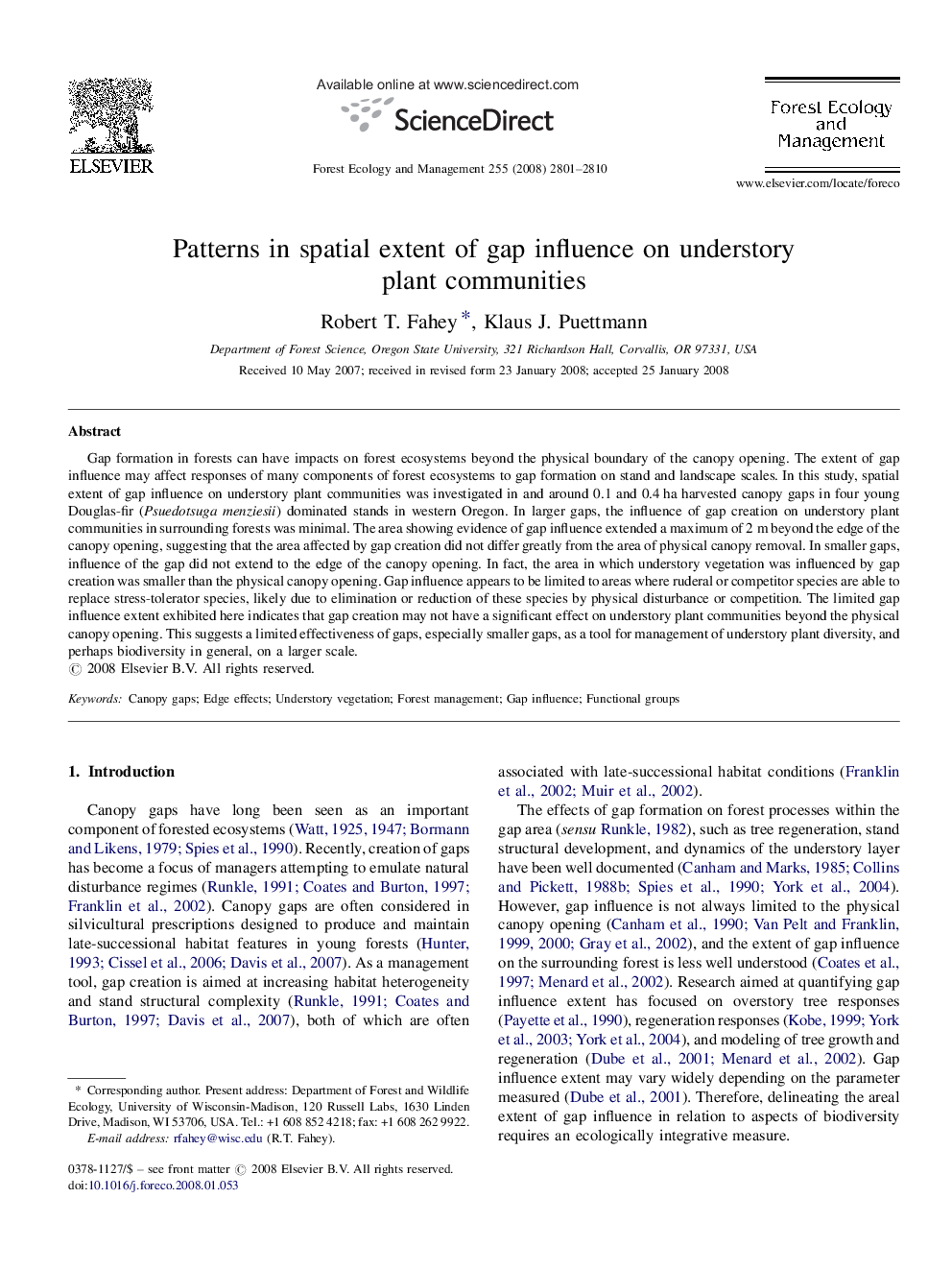| کد مقاله | کد نشریه | سال انتشار | مقاله انگلیسی | نسخه تمام متن |
|---|---|---|---|---|
| 89416 | 159340 | 2008 | 10 صفحه PDF | دانلود رایگان |

Gap formation in forests can have impacts on forest ecosystems beyond the physical boundary of the canopy opening. The extent of gap influence may affect responses of many components of forest ecosystems to gap formation on stand and landscape scales. In this study, spatial extent of gap influence on understory plant communities was investigated in and around 0.1 and 0.4 ha harvested canopy gaps in four young Douglas-fir (Psuedotsuga menziesii) dominated stands in western Oregon. In larger gaps, the influence of gap creation on understory plant communities in surrounding forests was minimal. The area showing evidence of gap influence extended a maximum of 2 m beyond the edge of the canopy opening, suggesting that the area affected by gap creation did not differ greatly from the area of physical canopy removal. In smaller gaps, influence of the gap did not extend to the edge of the canopy opening. In fact, the area in which understory vegetation was influenced by gap creation was smaller than the physical canopy opening. Gap influence appears to be limited to areas where ruderal or competitor species are able to replace stress-tolerator species, likely due to elimination or reduction of these species by physical disturbance or competition. The limited gap influence extent exhibited here indicates that gap creation may not have a significant effect on understory plant communities beyond the physical canopy opening. This suggests a limited effectiveness of gaps, especially smaller gaps, as a tool for management of understory plant diversity, and perhaps biodiversity in general, on a larger scale.
Journal: Forest Ecology and Management - Volume 255, Issue 7, 20 April 2008, Pages 2801–2810